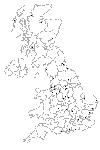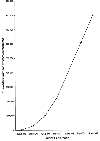The Million Women Study: design and characteristics of the study population. The Million Women Study Collaborative Group
- PMID: 11056681
- PMCID: PMC13913
- DOI: 10.1186/bcr16
The Million Women Study: design and characteristics of the study population. The Million Women Study Collaborative Group
Abstract
Objectives: To describe the design of the Million Women Study and the characteristics of the study population.
Study design: Population-based cohort study of women aged 50-64 in the UK.
Setting: Women are asked to join the Million Women Study when they are invited to routine screening for breast cancer at 61 of the screening centres of the UK National Health Service Breast Screening Programme (NHSBSP). An estimated 71% of women screened by the NHSBSP return a completed questionnaire.
Participants: 800 000 women were recruited between May 1996 and June 1999, and it is planned that an additional 200 000 will be recruited by the year 2000.
Results: The characteristics of the first 121 000 women recruited into the Million Women Study are described here. At recruitment 33% of the study population were currently using hormone replacement therapy and 47% had used it at some time. Over half (54%) had used oral contraceptives, and 18% were current smokers at the time of recruitment. Before they were screened 1.4% of the women had been diagnosed with breast cancer in the past, 6% had a mother with a history of breast cancer and 3.7% had a sister with a history of breast cancer. It is estimated that 1 million women will have been recruited by early in the year 2000, and that by the end of the year 2002 there will be 5000 screen-detected breast cancers and 23 000 deaths in the cohort, the majority of which will be attributed to cancer (12 600 deaths) and circulatory disease (8000 deaths).
Conclusions: By the end of the year 2002, the Million Women Study will have sufficient statistical power to detect relative risks of 0.8 or less, or of 1.2 or more in current users compared with never users of hormone replacement therapy for mortality from breast cancer, colorectal cancer, lung and ovarian cancer, ischaemic heart disease and stroke.
Figures
References
-
- Patnick J., (ed) NHS Breast Screening Programme ReviewNHSBSP: Sheffield. 1996.
-
- Nystrom L, Rutqvist LE, Wall S, et al. Breast cancer screening with mammography: overview of Swedish randomised trials. . Lancet. 1993;341:973–978. - PubMed
-
- Beral V, Doll R, Bull D, et al. Breast cancer and hormone replacement therapy: collaborative reanalysis of data from 51 epidemiological studies of 52705 women with breast cancer and 108411 women without breast cancer. Lancet. 1997;350:1047–1059. - PubMed
Publication types
MeSH terms
LinkOut - more resources
Full Text Sources
Medical
Miscellaneous



